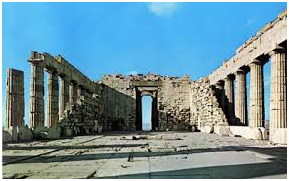
The Greeks are well known for their beautiful and luxurious celebrations and the Parthenon was exactly that. Of course, whilst the Doric columns and white marble make for a spectacular setting it’s a bit air due to it being a ruin now. Cheltenham Serviced Apartments on the other hand like the ones at https://www.q-let.co.uk/ are also well maintained as this world heritage site is. Let’s look at it on more detail.
The Parthenon was built between 447 and 432 BC to celebrate the victory of the Greeks over the Persians. The two states had been warring for years and competing of dominance of the Mediterranean basin. It shows what a measure of importance the ancient Greek city states put on this victory that they were prepared to spend so much money, skill and time on such a wonderful edifice to their success and proclaim it to the glory of the main deity Athena as opposed to Zeus. It was commissioned by a Perides who was a well-known statesman. This was done as it required a man of standing and character to drive the building of the temple on to completion. It was built over an existing site of a temple in Athens on the Acropolis. The building is dedicated to Athena Parthenos who is the patron deity of the city. As it was the Athenian state that had had been the major player in this war, along with their occasional ally, but generally more rival and adversary, Sparta, so it was deemed right and proper that this should be the location of its placement.
When one thinks of Athens it is almost impossible not to think of this beauty of the classical world. However, it would be wrong to think of it as only just a temple. It has played a variety of roles and had its purpose redirect several times. It became the treasury of the Delian League. This was a union of various city states dedicated to defeating the Persians via naval power. As the inland states had no use for a navy the City of Athens appropriated the fleet and being the building of the Athenian Empire and the Parthenon was used fully as a temple. By the end of its life as a complete building it was reappointed to the Christian God and became a temple for Greek Orthodox belief. After the invasion and successful capture by the Ottoman Empire it became a Muslim temple. Its rather ignominious use was as an ammunition dump for the Ottoman Empire. When this exploded by a hit form a Venetian war galley the damage that you see today was done. The Ottoman Empire allowed the British Explorer Elgin to take away some of the marble statues and these can be seen in the British museum. The Greeks would rather like them back. It is still very much an attraction in the area, each year drawing in large numbers of visitors. It is so well preserved that is one of the best examples Greek Temples in existence.
